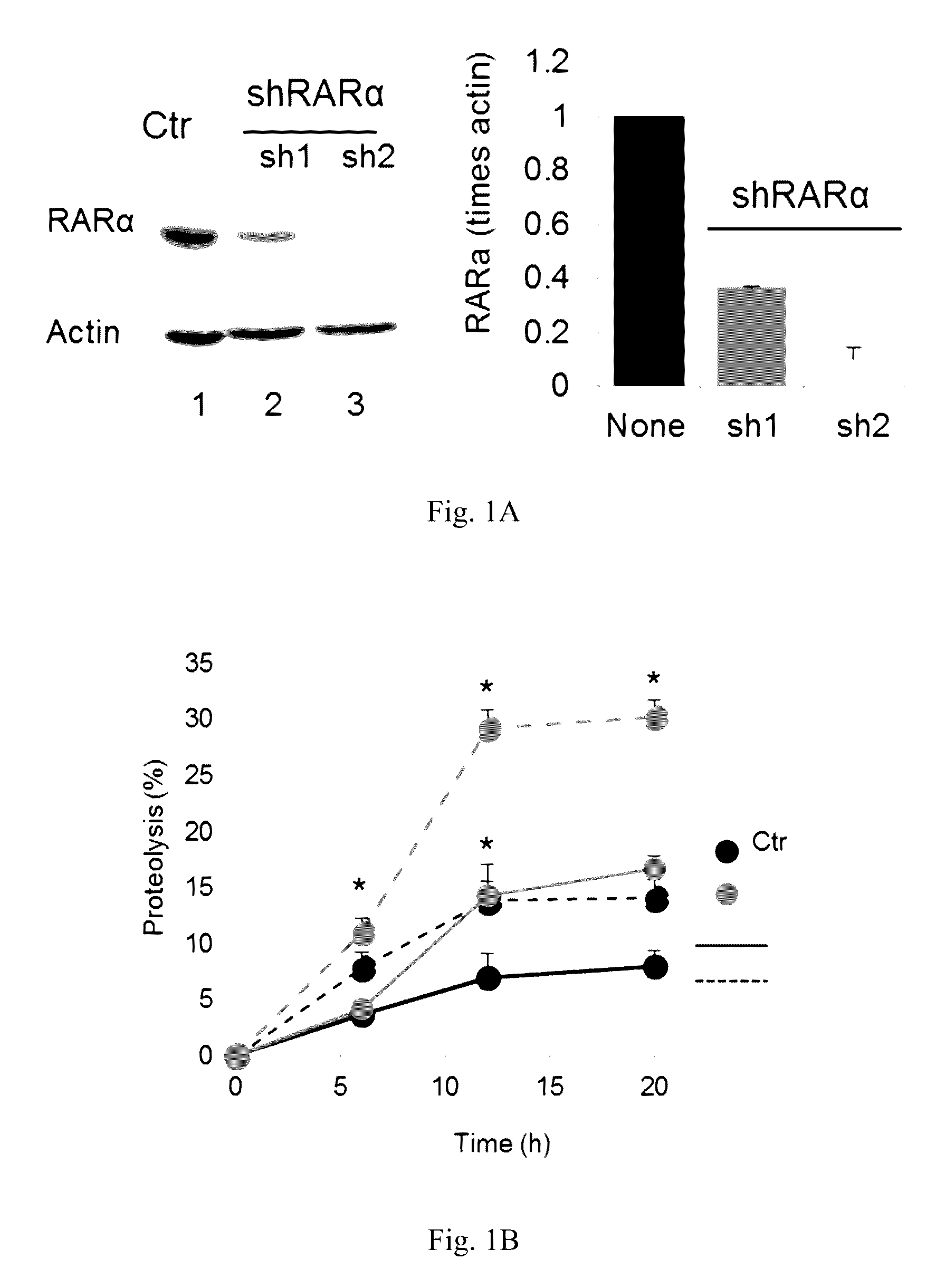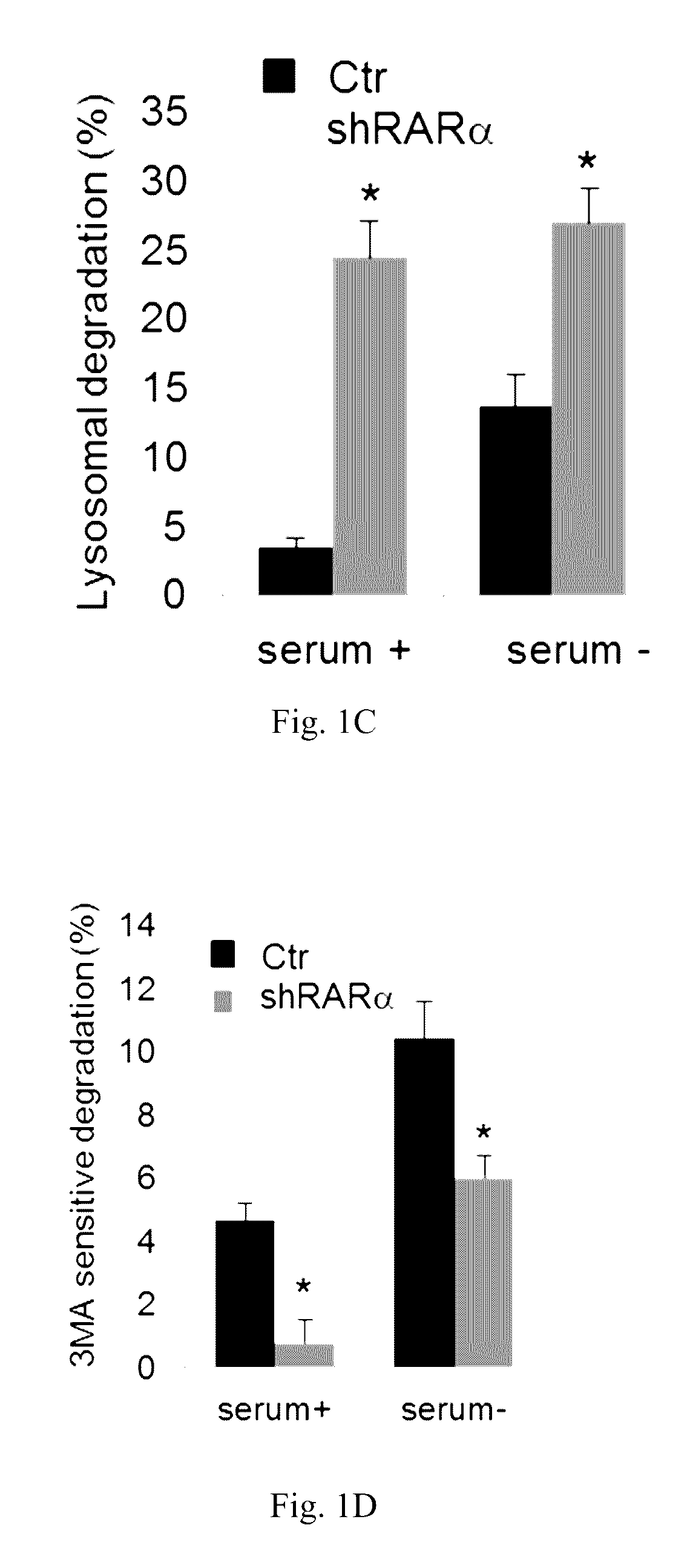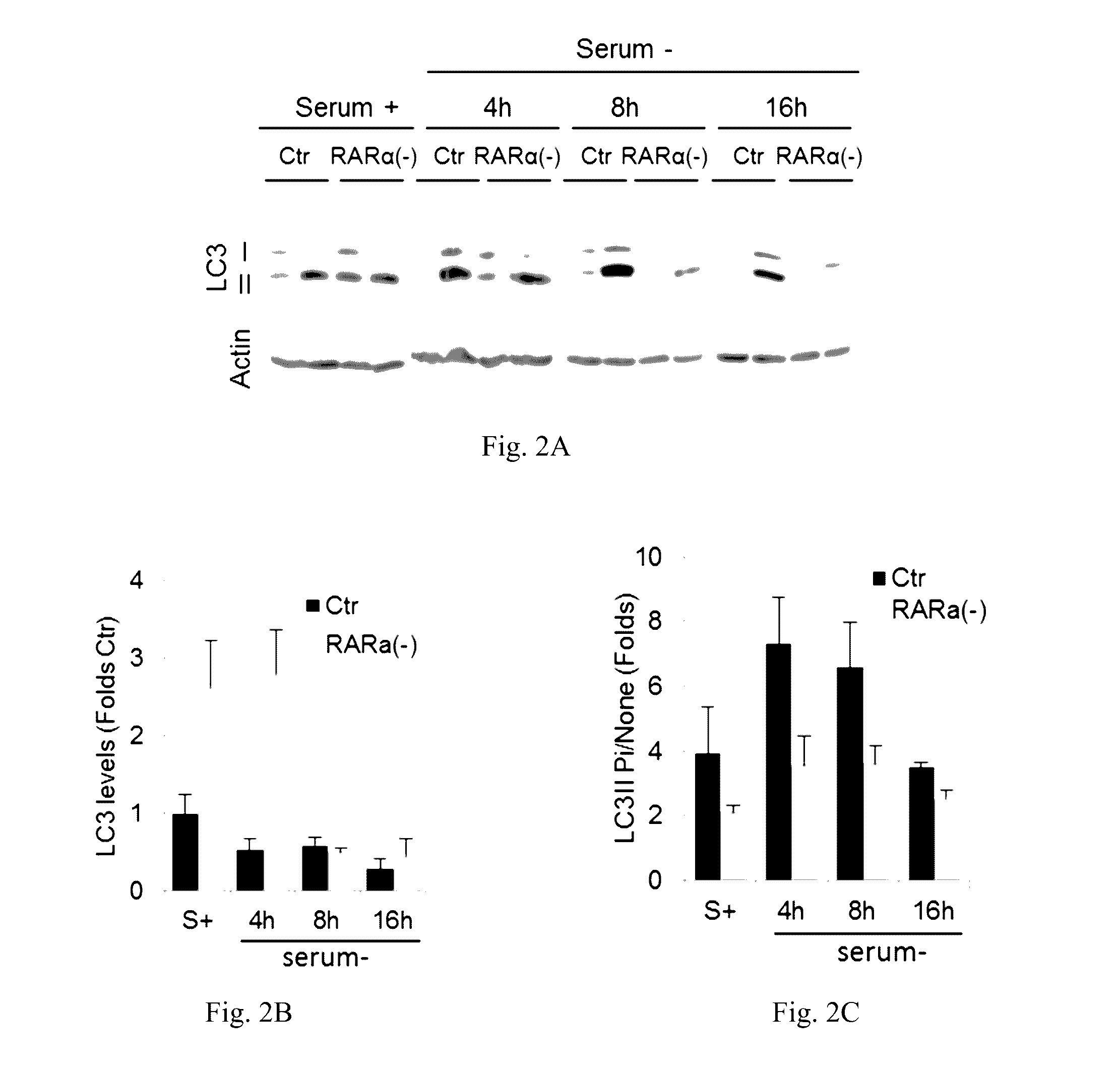Retinoic acid receptor antagonists as chaperone-mediated autophagy modulators and uses thereof
a technology of chaperone-mediated autophagy and retinoic acid receptor, which is applied in the field of retinoic acid receptor antagonists as chaperone-mediated autophagy (cma) modulators, can solve problems such as lack of information on cellular signaling mechanisms
- Summary
- Abstract
- Description
- Claims
- Application Information
AI Technical Summary
Benefits of technology
Problems solved by technology
Method used
Image
Examples
example a
Overview
[0067]The effect of retinoic acid receptor (RAR) signaling on CMA activity was investigated by taking advantage of expertise in the design and synthesis of novel retinoid derivatives with different biological activities23,24 to generate novel RARα modulators that could be used to modify CMA activity. Structure-based chemical design was used to mimic the critical regions of all-trans-retinoic acid (ATRA), and modifications were introduced that allow these novel retinoids to selectively modulate different RARα downstream effects. These compounds were demonstrated to lead to selective activation of CMA without noticeable changes in other autophagic pathways. Furthermore, it was demonstrated that chemical enhancement of CMA by treatment of cells with these novel compounds renders cells more resistant to oxidative stress and proteotoxicity. These findings highlight the therapeutic applicability of these and related compounds in the treatment of chronic diseases that associate wit...
example b
Overview
[0137]Chaperone-mediated autophagy (CMA) contributes to cellular quality control and the cellular response to stress through the selective degradation of cytosolic proteins in lysosomes. Pathogenic proteins of common neurodegenerative disorders such as Parkinson's and Huntington's disease or frontotemporal dementia have been shown to undergo degradation via CMA. A decrease in CMA occurs in aging and therefore may contribute to accelerate the course of age related disorders. There are very limited options for the chemical modulation of CMA. CMA is inhibited by signaling from the nuclear retinoic acid receptor α (RARα). In Example A, RARα antagonists (AR7, GR1 and GR2) were described that can selectively activate CMA without affecting other cellular clearance pathways. A structure-based drug design and medicinal chemistry, based on the AR7 scaffold, have now been applied to increase the CMA activation potency. Using a photoactivatable fluorescent CMA reporter, the CMA activati...
example 1
3-([1,1′-biphenyl]-4-yl)-7-chloro-2H-benzo[b][1,4]oxazine (A−1)
[0138]
[0139]To 2-amino-5-chlorophenol (143.6 mg, 1 mmol) in acetonitrile (10 mL) was added K2CO3 (0.27 g, 2 mmol). Into this, 1-([1,1′-biphenyl]-4-yl)-2-bromoethan-1-one (280 mg, 1.1 mmol) in acetonitrile (15 mL) was added dropwise at room temperature. The reaction was then stirred overnight under reflux. Then the solvent was evaporated and the residue was dissolved in dichloromethane (20 mL). The organic layer was washed with water, brine and dried over Na2SO4. The desired compound was isolated through silica gel chromatography. Recrystallization with hot ethanol gave a light yellow powder (A-1, 80 mg, 25%). MS (ESI) M+H+=320.09.
PUM
| Property | Measurement | Unit |
|---|---|---|
| temperature | aaaaa | aaaaa |
| temperature | aaaaa | aaaaa |
| temperature | aaaaa | aaaaa |
Abstract
Description
Claims
Application Information
 Login to View More
Login to View More - R&D
- Intellectual Property
- Life Sciences
- Materials
- Tech Scout
- Unparalleled Data Quality
- Higher Quality Content
- 60% Fewer Hallucinations
Browse by: Latest US Patents, China's latest patents, Technical Efficacy Thesaurus, Application Domain, Technology Topic, Popular Technical Reports.
© 2025 PatSnap. All rights reserved.Legal|Privacy policy|Modern Slavery Act Transparency Statement|Sitemap|About US| Contact US: help@patsnap.com



